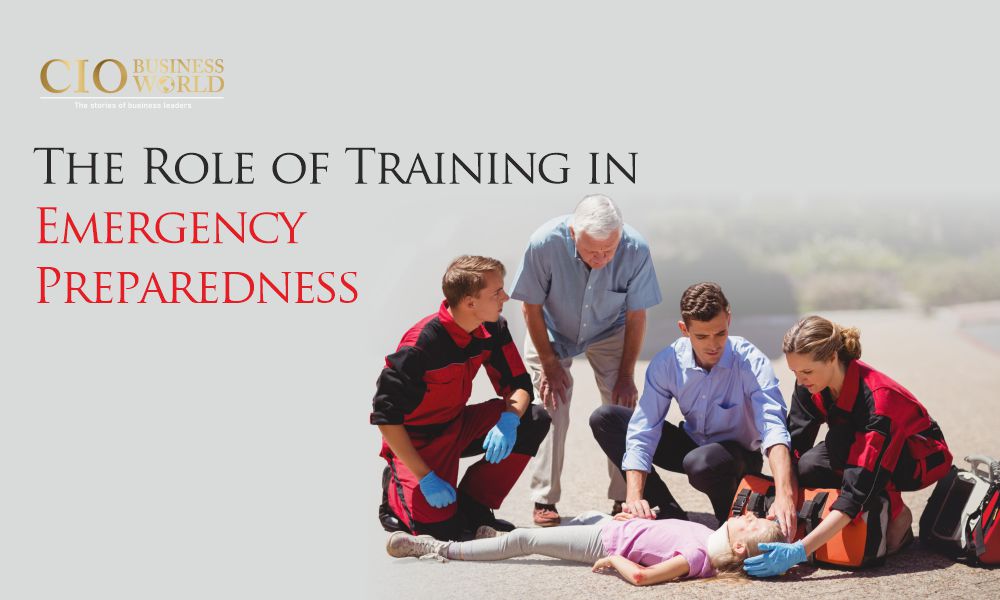Emergency situations strike without warning. Whether it’s a natural disaster, workplace accident, or medical crisis, the difference between chaos and controlled response often comes down to one critical factor: preparation through proper training.
When emergencies unfold, there’s no time to consult manuals or figure out procedures on the fly. The human brain, under extreme stress, relies on muscle memory and ingrained responses developed through consistent practice. This is why comprehensive emergency preparedness training isn’t just recommended—it’s essential for protecting lives and minimizing damage.
Organizations, communities, and individuals who invest in regular emergency training create a foundation of knowledge and skills that can mean the difference between tragedy and successful crisis management. Let’s explore how proper training transforms emergency preparedness from theoretical knowledge into life-saving action.
Building Muscle Memory Through Repetitive Practice
Effective emergency training goes beyond reading protocols or attending single-session seminars. It requires repeated practice that builds automatic responses. When people practice emergency procedures regularly, their bodies learn to perform critical actions without conscious thought.
Fire drills demonstrate this principle perfectly. Regular evacuation practice ensures that when a real emergency occurs, people know exactly which exits to use, where to gather, and how to move safely through potentially hazardous conditions. The same concept applies to medical emergencies, where CPR training creates the muscle memory needed to perform chest compressions at the correct depth and rhythm.
Professional first responders understand this deeply. Paramedics, firefighters, and police officers spend countless hours drilling scenarios until their responses become instinctive. This intensive preparation allows them to function effectively even in high-stress situations where clear thinking might otherwise be compromised.
Creating Coordinated Team Responses
Individual preparedness matters, but emergency situations often require coordinated group action. Training programs that involve multiple people help establish clear roles, communication protocols, and chain-of-command structures that prevent confusion during actual emergencies.
Workplace emergency response teams benefit tremendously from scenario-based training exercises. These sessions help team members understand their specific responsibilities, practice communication procedures, and identify potential problems before they occur in real situations. When everyone knows their role and trusts their teammates’ preparation, the entire response becomes more efficient and effective.
Community-level training programs create similar benefits on a larger scale. Neighborhood emergency response groups that train together develop the coordination needed to assist during natural disasters, power outages, or other widespread emergencies that might overwhelm professional first responders initially.
Identifying Weaknesses Before They Become Critical
Regular training exercises serve as testing grounds for emergency plans, revealing gaps or weaknesses that might not be obvious during planning phases. Mock emergencies often uncover communication breakdowns, equipment failures, or logistical problems that can be addressed before they compromise real emergency responses.
For example, evacuation drills might reveal that certain exit routes become congested, backup communication systems don’t function properly, or some team members need additional training in specific areas. These discoveries allow organizations to refine their procedures, upgrade equipment, or provide targeted additional training where needed.
The healthcare industry exemplifies this approach through regular code drills that simulate cardiac arrests, security threats, and natural disasters. These exercises help medical teams identify equipment placement issues, communication problems, or coordination challenges that could impact patient care during actual emergencies.
Reducing Panic Through Familiarity
Fear and panic are natural human responses to emergency situations, but they can significantly impair decision-making and physical coordination. Training helps reduce these reactions by making emergency procedures familiar and routine.
When people have practiced emergency responses multiple times, they approach actual crises with greater confidence and clearer thinking. This psychological preparation is just as important as learning physical skills or memorizing procedures. Confident, calm individuals make better decisions and can help reassure others during stressful situations.
Even in situations involving legal complications—such as accidents that might require consultation with Salt Lake City auto accident lawyers—individuals who have received basic emergency response training are better equipped to handle immediate safety concerns before addressing longer-term legal or insurance matters.
Adapting to Different Emergency Types
Comprehensive emergency preparedness training covers various scenarios because different types of emergencies require different responses. Natural disasters, medical emergencies, security threats, and technological failures each present unique challenges and require specific knowledge and skills.
Multi-scenario training helps people develop flexible thinking and adaptable responses. Someone trained in multiple emergency types can better assess situations, prioritize actions, and adapt their responses based on the specific circumstances they encounter.
This versatility proves especially valuable for individuals in leadership positions who might need to coordinate responses to unfamiliar emergency types or situations that don’t match standard protocols exactly.
Making Emergency Preparedness a Continuous Process
The most effective emergency preparedness training treats preparation as an ongoing process rather than a one-time event. Regular refresher courses, updated scenario practice, and continuous skill development ensure that emergency responses remain sharp and current.
Emergency protocols evolve as new technologies become available, lessons are learned from actual incidents, and organizational needs change. Training programs must evolve accordingly, incorporating new best practices and addressing emerging threats.
Organizations that commit to continuous emergency preparedness training create cultures where safety awareness becomes second nature, and emergency readiness becomes part of their operational identity rather than an occasional concern.
Transforming Preparation Into Protection
Emergency preparedness training transforms theoretical knowledge into practical life-saving skills. Through repetitive practice, coordinated exercises, and continuous improvement, training creates the foundation for effective emergency responses that protect lives and minimize damage.
Whether you’re developing workplace emergency procedures, participating in community preparedness programs, or simply wanting to be better prepared for personal emergencies, remember that training is the bridge between having a plan and successfully executing it when it matters most. Invest in comprehensive, ongoing emergency training—it’s preparation that could save lives, including your own.









